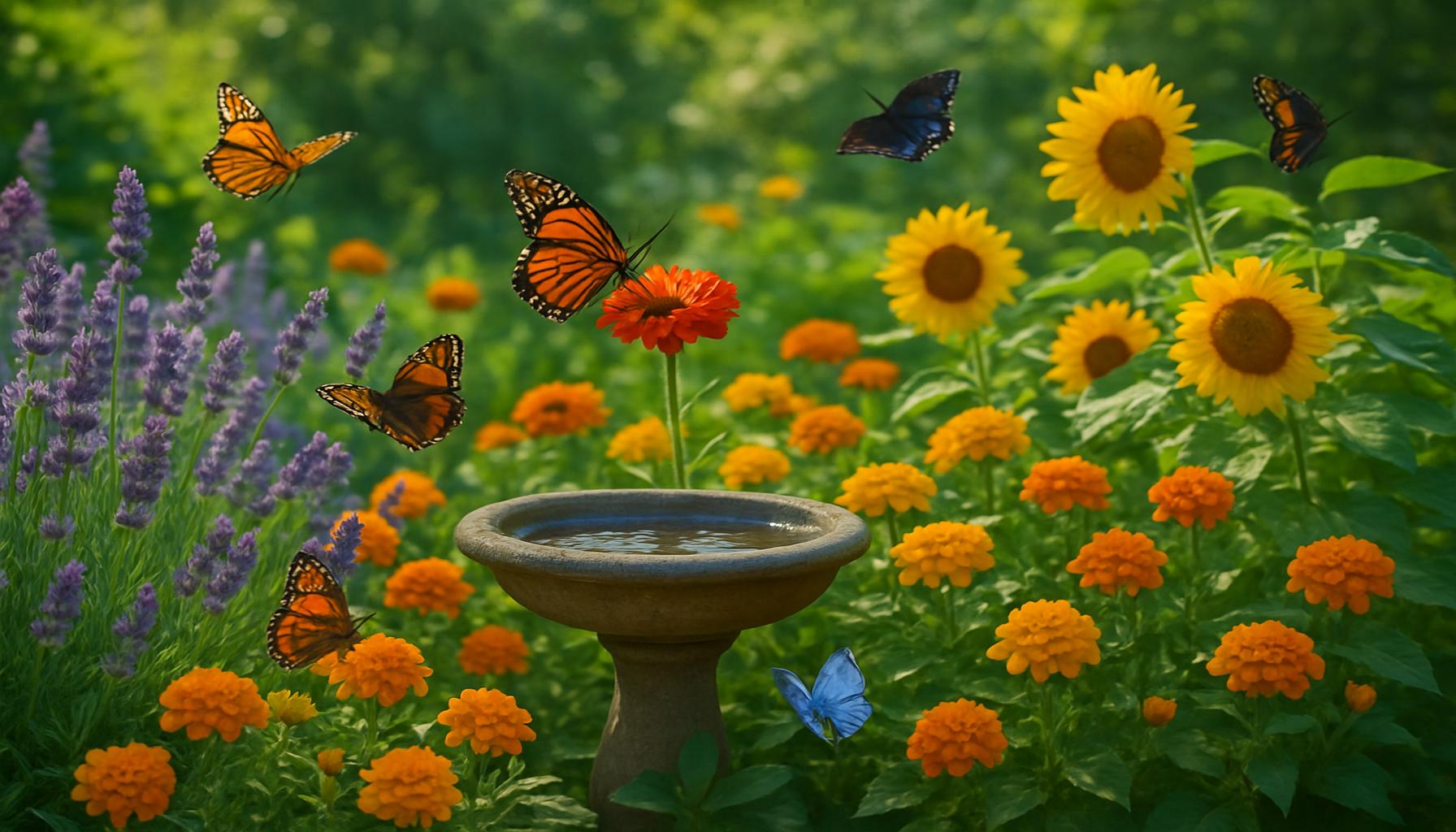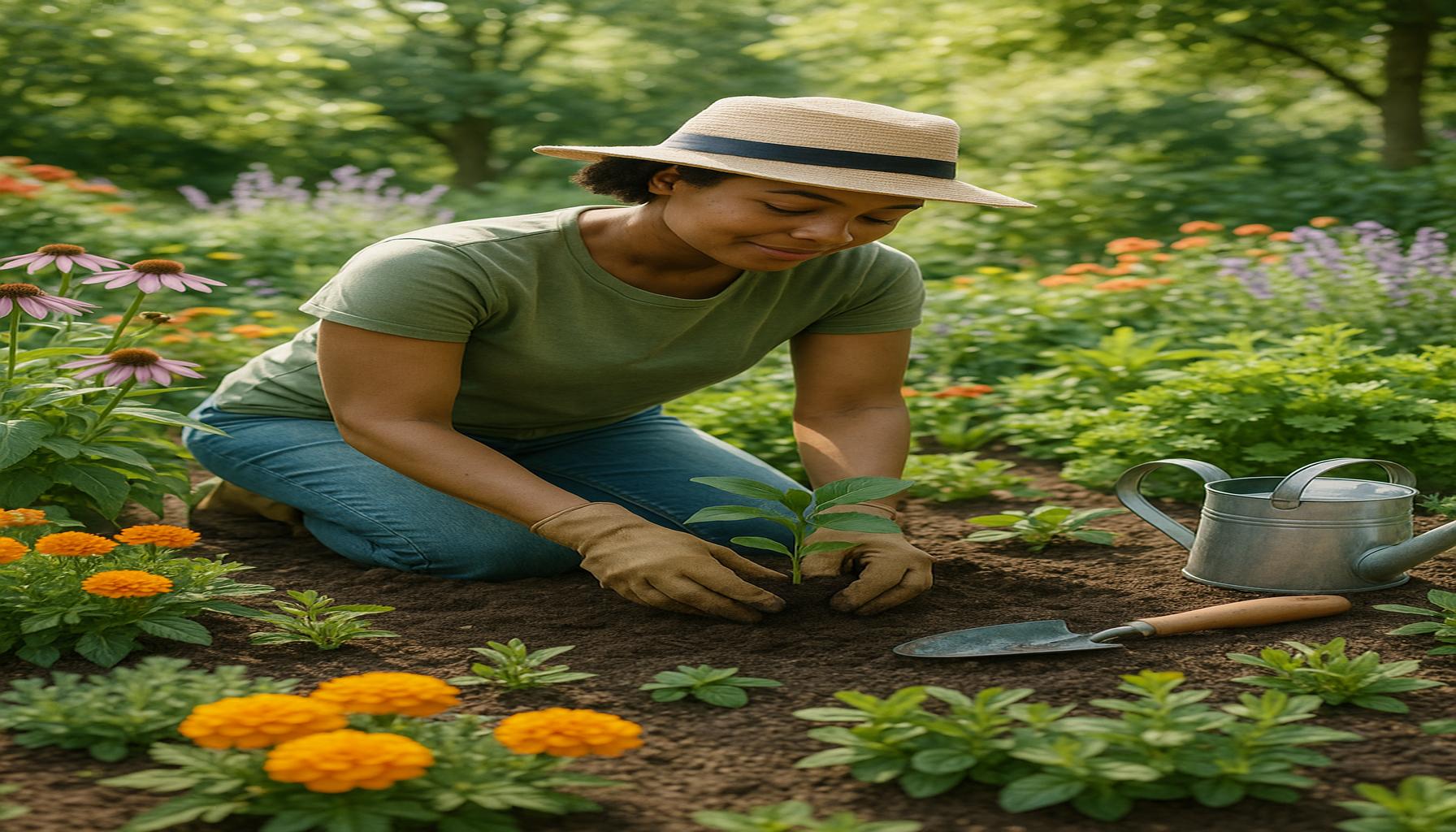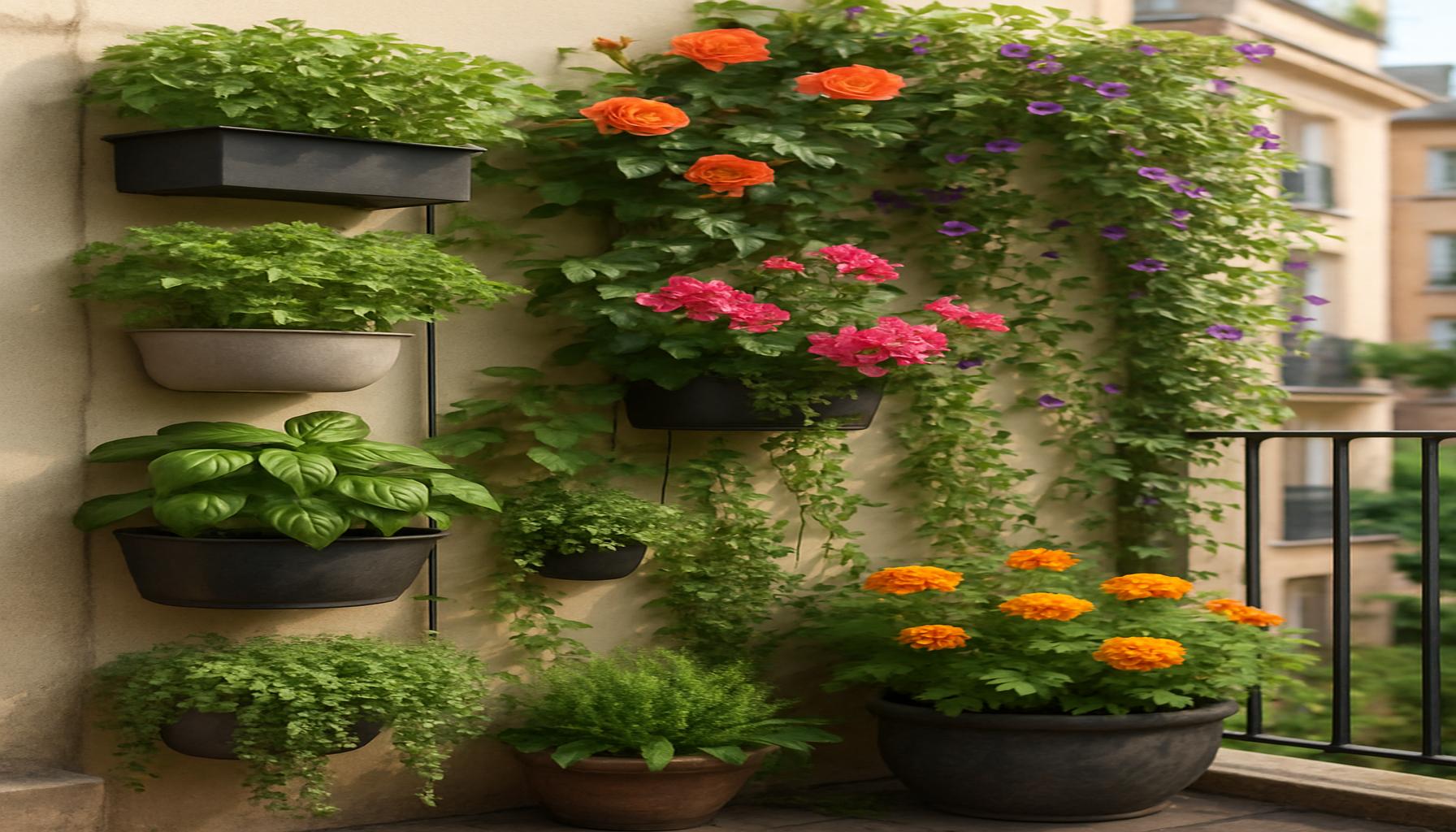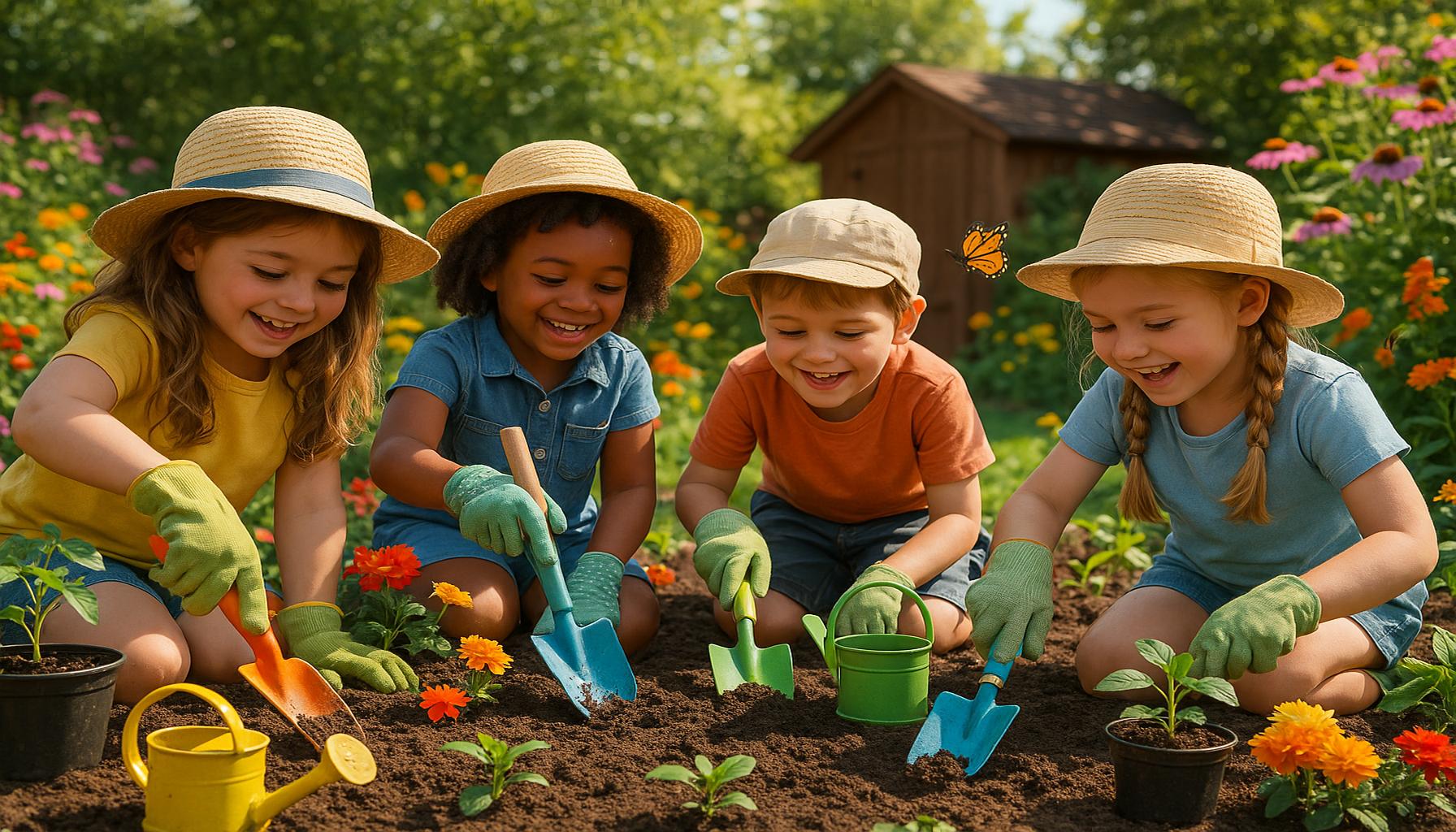Butterfly Gardens: Creating an Attractive Habitat for Pollinators

Attracting Nature’s Beauties
Creating a butterfly garden is like opening a doorway to a vibrant world filled with color and movement. These lovely gardens not only showcase the delicate beauty of butterflies but also provide a vital habitat for pollinators. By drawing butterflies into our gardens, we invite an array of wildlife and ensure the flourishing of our local ecosystem.
The significance of butterflies extends beyond aesthetics. They play a crucial role in our ecosystem by helping to pollinate a wide variety of plants. This connection emphasizes the need to cultivate spaces that support these important creatures, which are often indicators of a healthy environment. In fact, research has shown that habitats rich in butterfly species are generally more biologically diverse, resulting in more robust and resilient ecosystems.
Key Features of Butterfly Gardens
- Native Plants: Incorporating plants native to your region attracts local butterfly species, which have co-evolved with these flora and depend on them for food and breeding. For instance, in the southeastern United States, butterfly weed is a favorite of the striking Monarch butterfly, while in the Midwest, asters provide essential nectar for various species.
- Diverse Flora: A mix of flowers ensures blooms throughout the seasons. Consider planting early bloomers like daffodils and hyacinths that provide nutrients in the spring, along with summer stalwarts like coneflowers and black-eyed Susans, to create a haven for butterflies all year round.
- Water Sources: Small water features or shallow dishes filled with pebbles and water can help provide necessary hydration. Butterflies are attracted to moisture and often utilize these water sources to remain hydrated in hot weather.
In the United States, certain plants like milkweed, coneflowers, and lantana are particularly beneficial. Milkweed is the exclusive host plant for Monarch caterpillars, while coneflowers and lantana provide nectar throughout the growing season. These selections not only thrive in various climates but also offer nourishment for different butterfly species, ensuring a thriving garden ecosystem.
Establishing a butterfly garden is an endeavor for anyone passionate about nature. Whether you have a sprawling yard or a small balcony, creating a welcoming space can significantly impact local biodiversity. Additionally, these gardens can serve as educational opportunities for children and adults alike, fostering a deeper appreciation for the natural world and the roles these delightful insects play within it.
Moreover, as urban areas continue to expand, individual efforts to create butterfly-friendly environments become increasingly significant. Every garden, whether large or small, contributes to a larger network of green spaces that support wildlife. By transforming your outdoor space into a butterfly sanctuary, you not only enhance your immediate environment but also participate in a collective movement aimed at preserving these integral pollinators for future generations.
DISCOVER MORE: Click here for eco-friendly crafting ideas
Designing an Inviting Environment
To create a successful butterfly garden, understanding the habitats and needs of these enchanting insects is essential. One of the most significant aspects is the provision of nectar-rich flowers. Butterflies are primarily attracted to brightly colored blooms, particularly those in shades of red, yellow, orange, and purple. As you curate your garden, aim for an assortment of flowers that bloom at different times, ensuring that there is always a food source available from spring through fall. This continuous supply of nectar is vital for adult butterflies, who rely on it for energy and sustenance.
Essential Plants for Butterfly Gardens
When choosing plants, prioritize native flora, as they are best suited to support local butterfly populations. Each region possesses its unique butterfly species, so familiarizing yourself with the specific preferences of these insects in your area can enhance your garden’s effectiveness. Some other plants to consider include:
- Butterfly Bush (Buddleja davidii): Known for its fragrant spikes of purple flowers, this plant is a magnet for butterflies.
- Milkweed (Asclepias spp.): Critical for Monarch butterflies, milkweed serves as both a nectar source and a host plant for their larvae.
- Pentas: These bright, star-shaped flowers are adored by butterflies and bloom prolifically from spring to frost.
- Phlox: With its vibrant colors and sweet scent, phlox is another favorite among both butterflies and pollinators like bees.
- Zinnias: Easy to grow from seed, zinnias come in a variety of colors and shapes, attracting a wide range of butterfly species.
Another critical factor to consider is the arrangement of the plants in your garden. Grouping plants in clusters, rather than scattering them, enhances their visibility and attracts more butterflies. A cluster of flowers allows these insects to feed more efficiently, minimizing their energy expenditure, which is especially important given their transient nature.
In addition to nectar sources, incorporating larval host plants is crucial for the lifecycle of butterflies. Each butterfly species has specific plants that their eggs can be laid on, and their caterpillars will feed on once they hatch. By integrating these plants into your butterfly garden, you create a nurturing environment for the next generation of butterflies. For instance, Swallowtail butterflies often lay eggs on parsley or dill, while the Red Admiral butterfly prefers nettle.
As the seasons change, the needs of butterflies shift, presenting opportunities to adjust your garden. Planting for sustainability means providing a continuous cycle of plant shapes and sizes, which not only supports adult butterflies but the entire lifecycle from egg to caterpillar to chrysalis and back again. Adapting your plant selections to cater to diverse life stages enhances the ecological richness of your garden.
With thoughtful planning and care, any space can become a nourishing haven for butterflies. Stay tuned as we explore how to incorporate water features, shelter, and safe spaces into your butterfly sanctuary, ultimately enriching your garden and local environment.
| Advantage | Description |
|---|---|
| Enhanced Biodiversity | Butterfly gardens promote not only butterfly populations, but also other pollinators like bees and hummingbirds, significantly increasing local biodiversity. |
| Pollinator Support | These habitats provide essential resources such as food and shelter, which are crucial for the survival and reproduction of pollinators. |
| Educational Opportunities | Setting up a butterfly garden allows for educational experiences about ecosystems, encouraging appreciation of nature in communities. |
| Aesthetic Appeal | Butterfly gardens can transform ordinary spaces into vibrant landscapes, attracting visitors and uplifting the beauty of residential and public areas. |
Butterfly gardens serve as vital sanctuaries for pollinators, helping to address the alarming decline in their populations due to habitat loss and pesticide use. By cultivating a diverse range of plants, gardeners can ensure that butterflies and other beneficial insects have ample resources throughout their lifecycle. Furthermore, these gardens not only enhance the ecological health of the local environment but also provide homeowners with a sense of accomplishment and connection to nature. Engaging with butterfly gardens allows us to witness firsthand the essential role that pollinators play in the ecosystem, encouraging ongoing environmental stewardship.
DON’T MISS: Click here to discover the healing power of writing
Water and Shelter: Essential Elements for a Butterfly Haven
While nectar-rich flowers and host plants are fundamental to creating a butterfly garden, two other critical components are often overlooked: water sources and shelter. Butterflies, like all living creatures, need water for survival, and they are naturally attracted to moisture. Establishing a small water feature such as a birdbath or a shallow dish filled with pebbles and water can be a magnet for these beautiful insects. By having a small, shallow basin of water, you not only provide hydration but also an opportunity for butterflies to engage in behavior known as puddling.
Puddling involves butterflies gathering near moist areas where they can obtain necessary minerals and salts from the soil, which is vital for their reproduction and overall health. To facilitate this behavior, simply fill a shallow container with sand or gravel and moisten it regularly. Butterflies will flock to your garden, drawn not just to the flowers but also to the vital water sources you’ve created.
Creating Shelter and Protection
In addition to providing water, safe havens for resting and protection from predators are crucial for butterflies. This can be achieved by incorporating shelter plants such as shrubs, tall grasses, and even trees into your garden design. These plants offer refuge from the wind, harsh weather, and potential predators like birds. A diverse range of vegetation, including layered planting designs, will create a vibrant and multilayered habitat that caters to butterflies and other beneficial insects.
Some excellent sheltering plants include:
- Native Grasses: Such as switchgrass and bluestem, provide cover for butterflies and their larvae.
- Shrubby Species: Plants like aster and honeysuckle not only provide flowers for nectar but also dense foliage where butterflies can hide.
- Trees: Oak and willow trees not only contribute to a rich ecosystem but also serve as habitat for various butterfly species during the vital stages of their life cycle.
The importance of landscape structure cannot be underestimated when creating a butterfly sanctuary. Consider purposefully combining low-growing ground cover plants with mid-height perennials and taller shrubs or trees. This varied structure does wonders for harboring a range of species and instilling an environment thriving with biodiversity.
Minimizing Pesticides for Healthier Pollinator Populations
Equally important is the need to protect these fragile creatures from harmful chemicals. Pesticides, while effective in controlling pests, can have devastating effects on butterfly populations. Opting for organic gardening methods, such as using non-toxic pest deterrents or encouraging natural predators like ladybugs, can help maintain a healthy environment for butterflies and other pollinators. Moreover, ensuring that your garden adheres to sustainable practices will foster not only butterfly attraction but also the overall ecological integrity of your local landscape.
As you design your butterfly garden, remember that an ecosystem is a delicate web of interdependencies. Incorporate features like these to create a three-dimensional landscape that supports butterflies, bee populations, and a wealth of other wildlife, enhancing the beauty and health of your surroundings.
DISCOVER MORE: Click here to learn about sustainable gardening
Conclusion: A Flourishing Sanctuary for Pollinators
In conclusion, creating a butterfly garden is not only a delightful way to beautify your surroundings but also an essential contribution to the health of our planet. By providing nectar-rich flowers, host plants, and critical resources such as water and shelter, you establish an attractive habitat for butterflies and various pollinators. Such gardens foster biodiversity, contributing to the delicate balance of ecosystems that sustain life.
Incorporating diverse planting designs that cater to both adult butterflies and their larvae plays a pivotal role in your efforts. When designing your sanctuary, remember to consider the landscape structure—layering plants of different heights can create a thriving microhabitat that not only attracts butterflies but also supports a myriad of other beneficial wildlife.
The conscious choice to minimize harmful pesticides further safeguards these fragile yet vital creatures. Opting for organic gardening practices not only nurtures your butterfly population but helps in sustaining the natural ecosystem, ultimately enhancing the beauty and functionality of the landscape.
As we explore ways to combat the decline of pollinators in the United States and beyond, transforming our gardens into vibrant butterfly havens stands as a compelling solution. By embracing this initiative, we not only bring joy and wonder to our outdoor spaces but also play our part in a larger movement towards ecological resilience. Engage with your garden as a living art form, and watch as it flourishes into a bustling sanctuary for butterflies and other vital pollinators.


